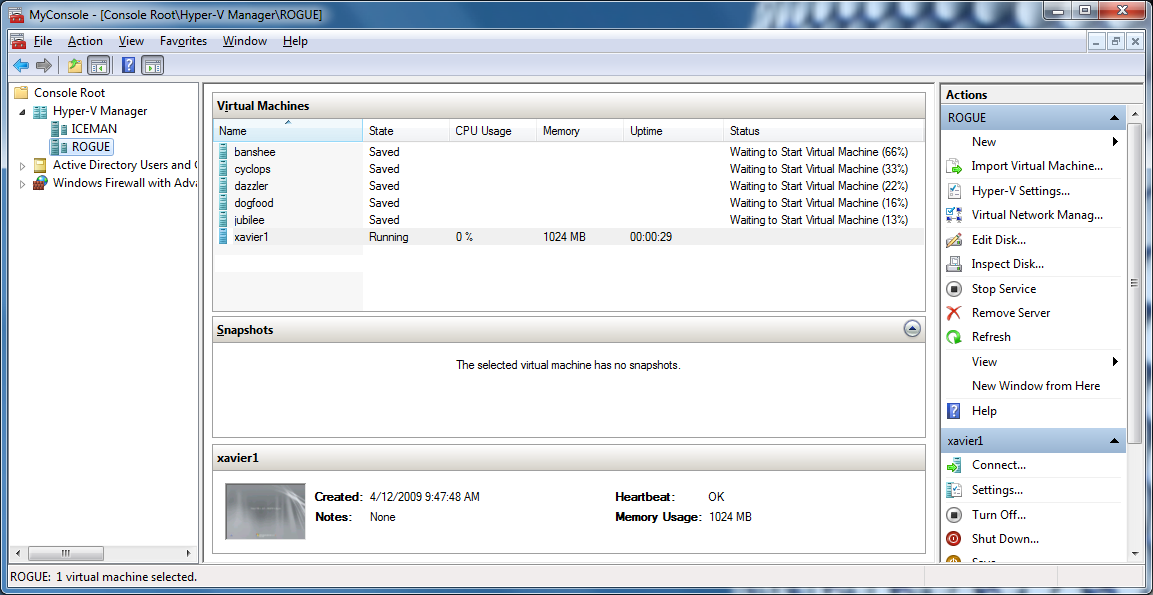Stagger the Startup of Your Virtual Machines
I've mentioned before how I run two Hyper-V servers in the "Jameson Datacenter" (each one hosting a variety of different VMs).
On the rare occasion that a patch comes out on Windows Update that affects Windows Server 2008 Server Core edition (such as earlier this week), I typically need to schedule a reboot of the Hyper-V servers. (From what I recall, most patches affecting Server Core seem to require a reboot -- which makes me glad they don't come out very often.)
While rebooting one of the servers this morning, I was reminded how I had previously staggered the startup of the various VMs to avoid "hammering" the hard disks by starting all of the VMs simultaneously.
Here's a screenshot that I captured this morning to illustrate what I'm talking about:

Figure 1: Hyper-V staggered start
Notice how XAVIER1 is already started, but the other VMs are waiting to start.
Even though I spread the six VMs running on ROGUE across two RAID 1 arrays (to help mitigate I/O contention), whenever the server is rebooted, you can imagine the load when trying to restore all of the VMs from saved state. Even worse, though, is when the power goes out in my house (which fortunately isn't very often at all), in which case all of the VMs have to start from scratch since Hyper-V didn't have a chance to save the state of each VM due to the power outage. [I used to have a UPS (Uninterruptable Power Supply), but the battery in it died a number of years ago and now I just risk the occasional "hard" reboot.]
All of the VMs that run on ROGUE are configured with the following setting:
- Automatic Start Action
- What do you want this virtual machine to do when the physical computer starts? Always start this virtual machine automatically
In the Startup delay field, I specify the different values for each VM.
| Virtual Machine | Startup Delay [sec] |
|---|---|
| XAVIER1 | 0 |
| BANSHEE | 60 |
| CYCLOPS | 120 |
| DAZZLER | 180 |
| DOGFOOD | 240 |
| JUBILEE | 300 |
In my environment, 60 seconds appears to be a sufficient in most cases. Honestly, it's probably not enough to cover a "cold" boot of each VM (after a power outage) but it still gives each VM time to load up most of the way before the next VM starts accessing the disk.